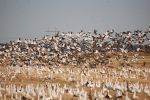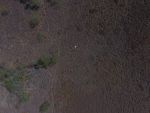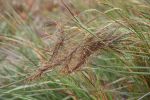
All News
Natural disasters such as hurricanes are unpredictable, devastating phenomena. Hurricanes can generate winds 200 km/hr and torrential rain at a rate of 10 cm/hr. While their impact on physical structures (e.g., buildings, trees, etc.) may be readily assessed, the effects of hurricanes on wildlife remain obscure and relatively unknown. A few studies have reported the impacts of hurricanes on wildlife, namely wild turkeys (Meleagris gallopavo; Baumann et al. 1996) and white-tailed deer (Odocoileus virginianus; Labisky et al. 1999).
Extreme climatic events (ECEs) are increasing in frequency and intensity and this necessitates understanding their influence on organisms. Animal behaviour may mitigate the effects of ECEs, but field studies are rare because ECEs are infrequent and unpredictable. Hurricane Irma made landfall in southwestern Florida where we were monitoring white-tailed deer (Odocoileus virginianus seminolus) with GPS collars.
Texas is home to the last remaining populations of the U.S. ocelot, a small and beautiful cat that is often called the little leopard. Researchers estimate that only 50 to 80 of these magnificent and mysterious cats exist in Texas. Ensuring they have a future in the U.S will require cooperation between the federal government and private landowners, and the Caesar Kleberg Wildlife Research Institute at Texas A&M Kingsville is doing the rare research to support those efforts.
Each fall and spring, millions of migratory birds traverse the Texas skies as they make their journeys between temperate breeding areas and tropical wintering areas. The migration route draws national attention, and bird enthusiasts flock to Texas every year to witness the migration and bring with them the hopes of seeing some of the birds that make stopovers during the journey.
In the greater Dallas-Fort Worth area, you may have spotted a scarlet tanager or an array of songbirds in your backyard this spring on their way to their more northerly breeding areas.
Camera trap technology has galvanized the study of predator–prey ecology in wild animal communities by expanding the scale and diversity of predator–prey interactions that can be analysed. While observational data from systematic camera arrays have informed inferences on the spatiotemporal outcomes of predator–prey interactions, the capacity for observational studies to identify mechanistic drivers of species interactions is limited.
Endangered ocelots in South Texas prefer to use unfragmented landscapes. Efforts to conserve the imperiled feline should focus on maintaining large patches of woody cover, particularly on private lands, researchers found. CKWRI researcher, Jason Lombardi, stresses the importance of working with private landowners for ocelot recovery. Read the entire article by The Wildlife Society HERE.
Photo by: Ben Masters
WESTMINSTER, Colorado - MAY 29, 2020 - Scientists writing for the journal Invasive Plant Science and Management say several exotic grass species once grown in South Texas for livestock forage and erosion control have expanded from the areas where they were planted and have become invasive. They now are reducing the region's biodiversity and the habitats available for wildlife.
KINGSVILLE — Whole cottonseed has long been a go-to supplemental feed for
white-tailed deer. However, one veterinarian researcher says more study is needed.
That was the gist of the message offered by Dr. Clay Hilton, DVM, at the Caesar Kleberg
Wildlife Research Institute’s Deer Associates annual gathering here earlier this year. In
addition to being a veterinarian, Hilton, who also has degrees in wildlife science, is the
director of veterinary technology at Texas A&M University-Kingsville where he plays an
Landowners and CKWRI scientists have been using research findings (see article below) to develop burning, spraying, and grazing regimes that reduce seed production and keep Tanglehead seeds buried by limiting soil disturbance. These practices show promise in reducing Tanglehead populations.
Please click here to view the pdfs of the presentations given at the 2020 Deer Research Meeting on March 6th in San Antonio, Texas!









